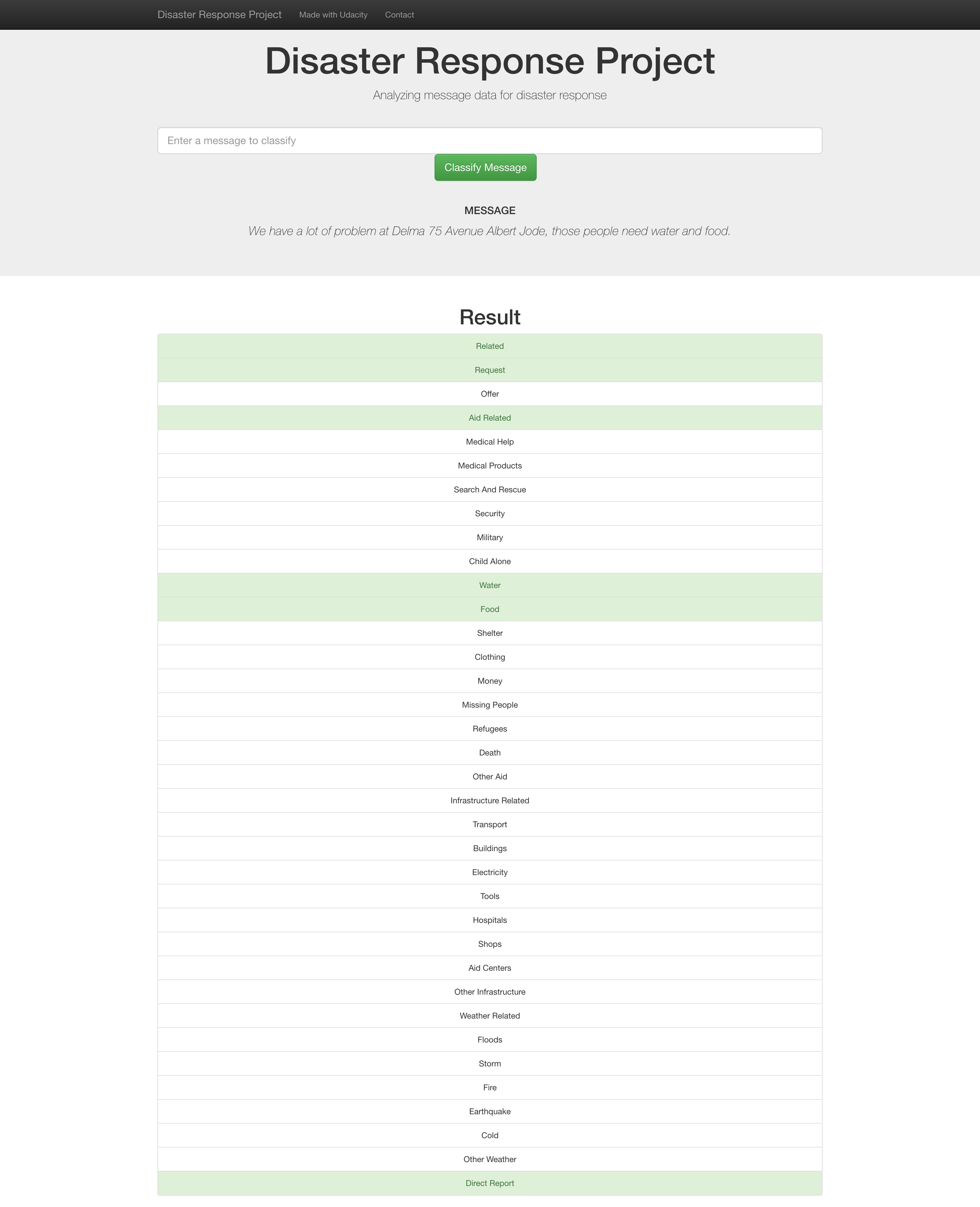Disaster Response Pipeline Project
Project Motivation
In this project, I apply skills I learned in Data Engineering Section to analyze disaster data from Figure Eight to build a model for an API that classifies disaster messages.
File Description
.
├── app
│ ├── run.py # Flask file that runs app
│ └── templates
│ ├── go.html # Classification result page of web app
│ └── master.html # Main page of web app
├── data
│ ├── disaster_categories.csv # Dataset including all the categories
│ ├── disaster_messages.csv # Dataset including all the messages
│ └── process_data.py # Data cleaning
├── models
│ └── train_classifier.py # Train ML model
└── README.md
Instructions:
-
Run the following commands in the project's root directory to set up your database and model.
- To run ETL pipeline that cleans data and stores in database
python data/process_data.py data/disaster_messages.csv data/disaster_categories.csv data/DisasterResponse.db - To run ML pipeline that trains classifier and saves
python models/train_classifier.py data/DisasterResponse.db models/classifier.pkl
- To run ETL pipeline that cleans data and stores in database
-
Run the following command in the app's directory to run your web app.
python run.py -
Go to [http://0.0.0.0:3001/].
Example
Type in: We have a lot of problem at Delma 75 Avenue Albert Jode, those people need water and food.

